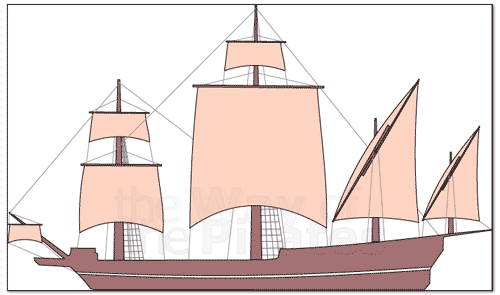
She was finally grounded on the south side of the inlet. She had been driven there by a fierce nor’easter with visibility shrouded by a swirling snowstorm. On a day in February 1809, this imposing ship, bound from Canton, China, to New York City with a cargo of tea and silks, ran into trouble near Townsend’s Inlet. The story of the Guatamazon is well-documented. Such a ship was usually the largest and most prestigious in the complement of any global maritime fleet.

The Guatamazon (or “Guatamoozin” as she was known to the locals) was a three-masted, full-rigged ship flying the British flag. The following story was pieced together from several sources. It’s odd that there seems to be just a single reference to this potentially very profitable mishap. Since then, there appears to be no record. After a century of searching, the sunken ship and its cargo still hadn’t been found. The Montezuma, a Spanish galleon on its way from Mexico to Spain laden with a million dollars in gold and silver, sank during a storm a few miles off the coast of Townsend’s Inlet in 1797. (1) The Spanish galleon was another type of ship that sank in waters off Ludlam’s Island. The fate of Minerva’s crew and her cargo is unknown. She was carrying a cargo of spices, tea, coffee and silk, which implies she was sailing from the Orient, probably headed for New York City.

The ship Minerva was stranded and left derelict in March 1791, on the shore of what was to become Sea Isle City. If so, this was probably the first documented shipwreck in the history of Ludlam’s Island. The author concluded that the source of this treasure was the Fame, and that she indeed had gone down in Corson’s Inlet. On July 8, 2012, it was reported that after a dredging operation dumped sand from Corson’s Inlet onto Strathmere Beach, Spanish reales and doubloons began to pop up on the beach – with none dated later than 1781. She was originally reported to have sunk off Peck’s Beach (now Ocean City), but evidence has since surfaced that places the event farther south. The story of the Fame may not have ended with her demise in 1781. On February 22, 1781, heavily laden with plunder, she sank to the bottom of the sea, taking 20 mariners with her. Government to attack and seize British ships during the Revolutionary War. Fame was a two-masted, privately owned brig, originally commissioned by the U.S. Two hundred and forty years ago, the American privateer Fame, under command of a man named William Treen, capsized in a heavy gale off the Jersey coast. This is the story of those wrecks, some nearly forgotten – noted by just a single line in a database. We don’t have images of the specific vessels involved, but we can get a fair idea from paintings and models of contemporary ships with similar characteristics. Documentation has survived on only a handful of wrecks from those very early days, and some of that is pretty sketchy.

It wasn’t until the mid-1850s, when the Townsend’s Inlet Life Saving Station came into being, that any kind of systematic record was kept.īefore that, there simply weren’t a lot of people around to observe, let alone record, the shipwrecks that must have occurred regularly. In the 18th and 19th centuries, thousands of ships skirted the island from Townsend’s Inlet to Corson’s Inlet. Imagine trying to juggle all this in real time in the face of a sail-shredding, 80 mph nor’easter with zero visibility in a driving snowstorm. When sailing within about 20 miles of land, a ship’s master had to rely on his own eyes, aided by a simple compass and prior charts of landmarks, shoals, water depths, and tide directions. (Courtesy of Wikipedia)Įver since Christopher Columbus bumped into San Salvador on Columbus Day in 1492, deep-sea navigational tools have been capable of guiding ships all the way across the ocean.īut these tools were nearly useless, especially in the early days, along coastlines like that of New Jersey. The two-masted brig was one of the types of sailing ships that met their demise off Sea Isle City, then known as Ludlam's Island.


 0 kommentar(er)
0 kommentar(er)
